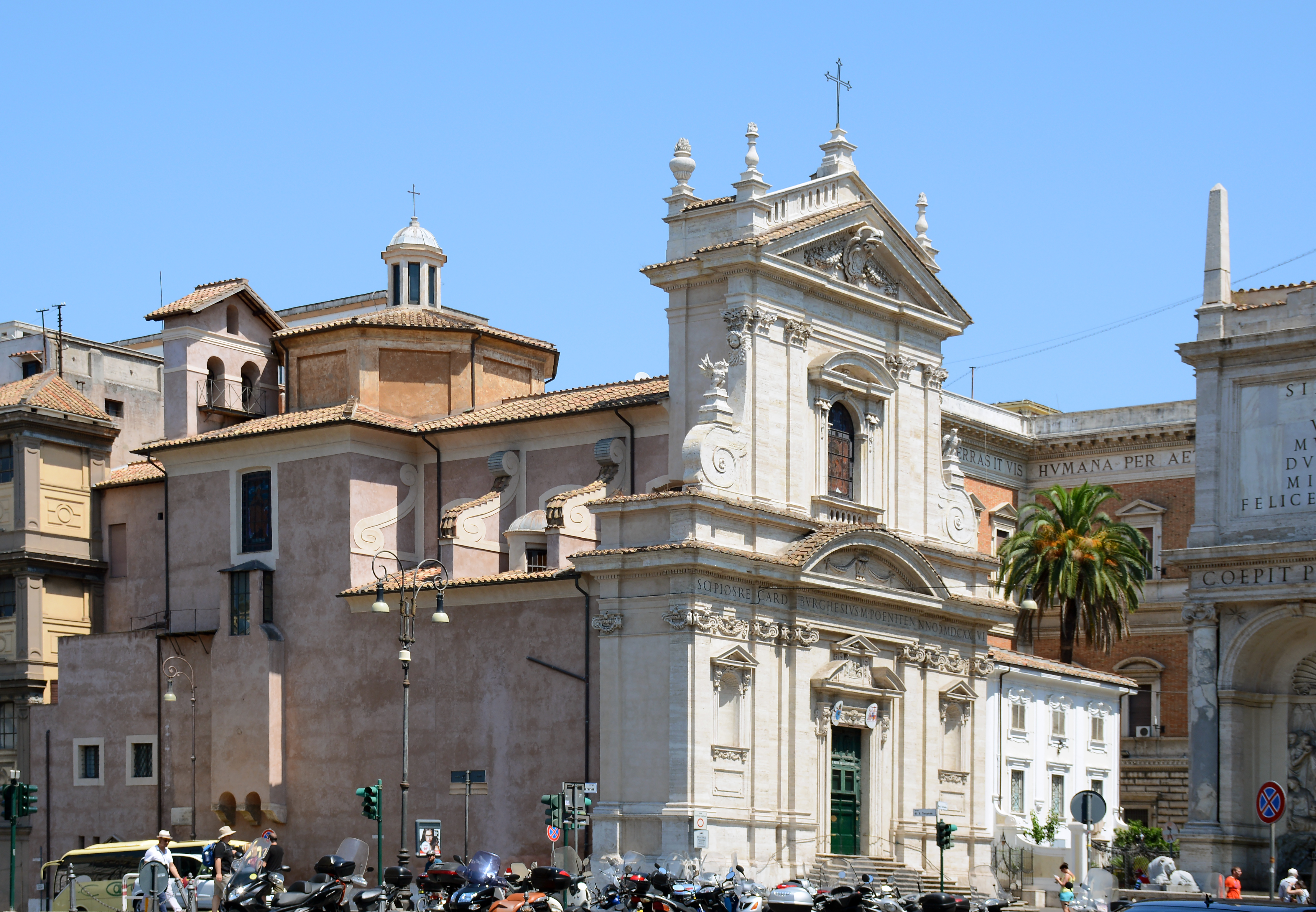
by Cedric | Nov 1, 2018 | Art, General, Miscellaneous
Where to begin? S.M della Vittoria has to be in my top 4 churches in Rome, perhaps even my top 7 of all time. Those of you who have ears will have heard my podcast on heaven’s inherent contradictions. The cover photo for that most enjoyable podcast post was a Bernini sculpture from within this church. This remains the principle reason for this church’s high ranking in my list. I’ve pictured it for you below.

I’m not sure if you can see in detail the magnificent ode to Bernini’s genius. The sculpture is a representation of the ecstasy of Santa Teresa D’Avila in Spain. We were taught about her in philosophy class in sixth form. My first sight of it, some two years ago, came as quite a shock!
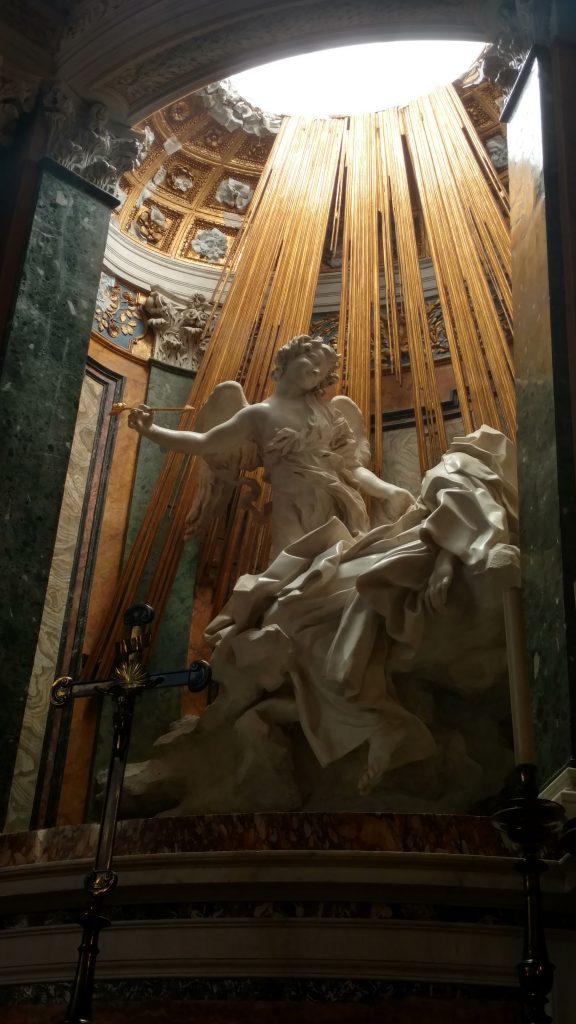
There it is in more detail. This work was created between 1647-52. To see it now, survived nearly 400 years in perfect condition is really quite impressive. It can be found in the Cornaro chapel. But you can’t miss it, there is always a queue.
The church was begun in 1605 as a chapel dedicated to Saint Paul for the Discalced Carmelites. After the Catholic victory at the battle of White Mountain in 1620, which reversed the Reformation in Bohemia, the church was rededicated to the Virgin Mary. Turkish standards captured at the 1683 siege of Vienna hang in the church, adding to the theme of the Virgin helping to lead Catholic armies to victory.
My advice to you would be to check the open times. It closes around 12.30 for three hours. I’ve never understood the European need to take 1/4 of their day off, but then again I seldom eat.
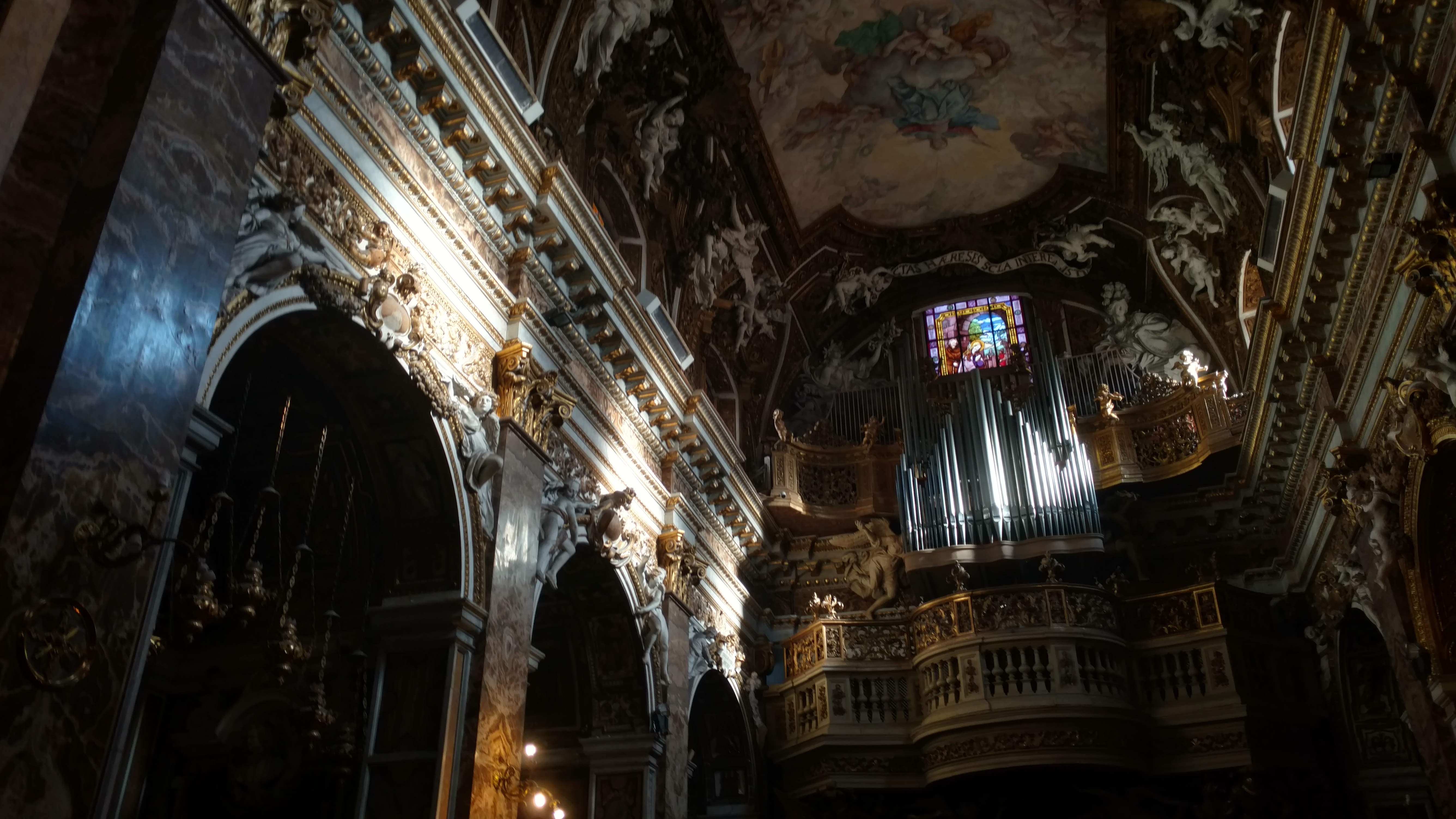
The interior of the church is adorned with triumphant themes. Every you look there’s a gilded stuccos and corinthian pilaster there, and even a fresco of The Virgin Mary Triumphing over Heresy and Fall of the Rebel Angels executed by Giovanni Domenico Cerrini in 1675.
In all, it would be silly not to witness this glorious ode to Bernini’s genius. Additionally, it’s right in the centre of Rome. No excuses! Via Veneto , nearby, is also very much worth seeing.
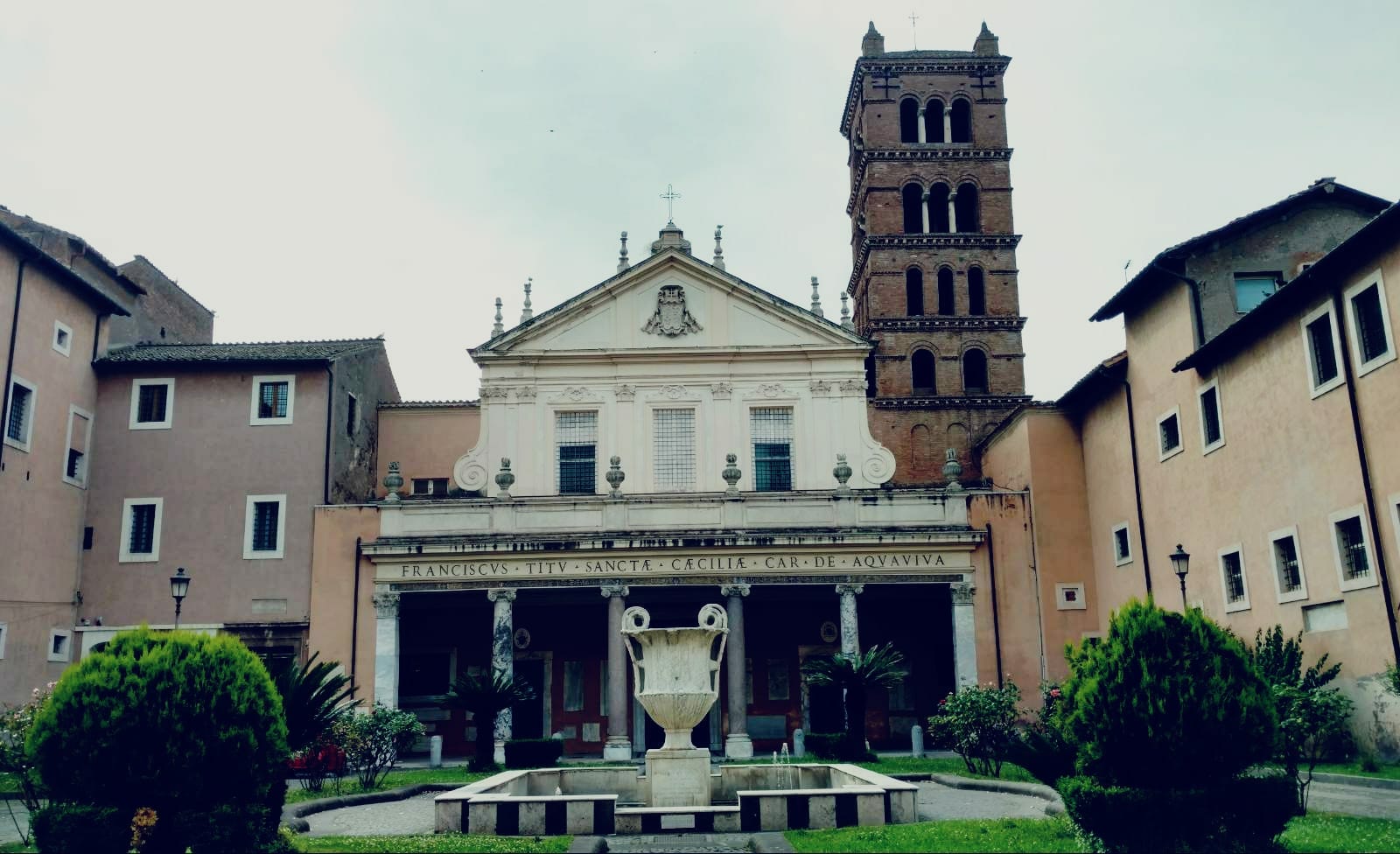
by Cedric | Aug 3, 2018 | General, Miscellaneous
On a brief sojourn to Roma Tre, as aforementioned, I was advised by my dear friend Ginebri to visit Santa Cecilia. I wasn’t prepared for just how spectacular this secluded church would be.
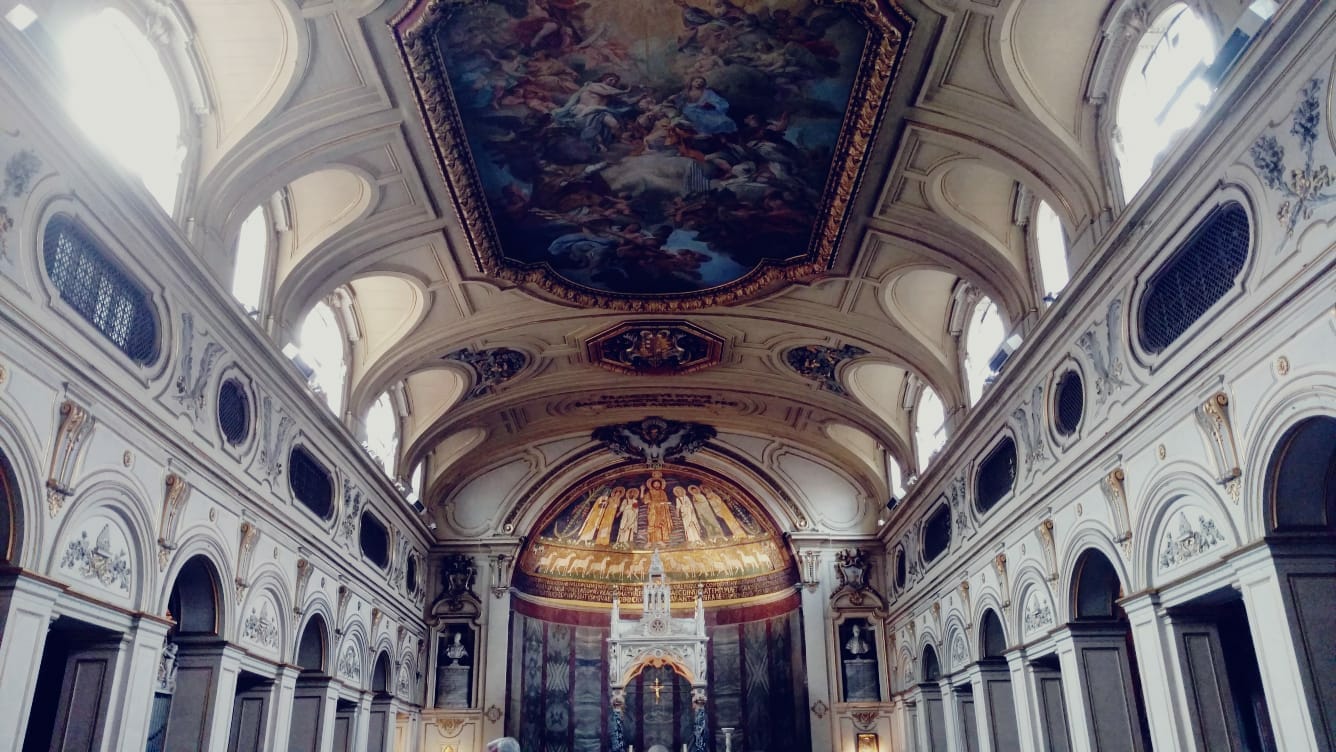
Splendid marble adorns every wall. The altar is made of the most glorious gold. The concave mosaic behind the altar marks the original spot of the first 3rd century church. It is said that Santa Cecilia in Trastevere was built over the home of the saint herself.
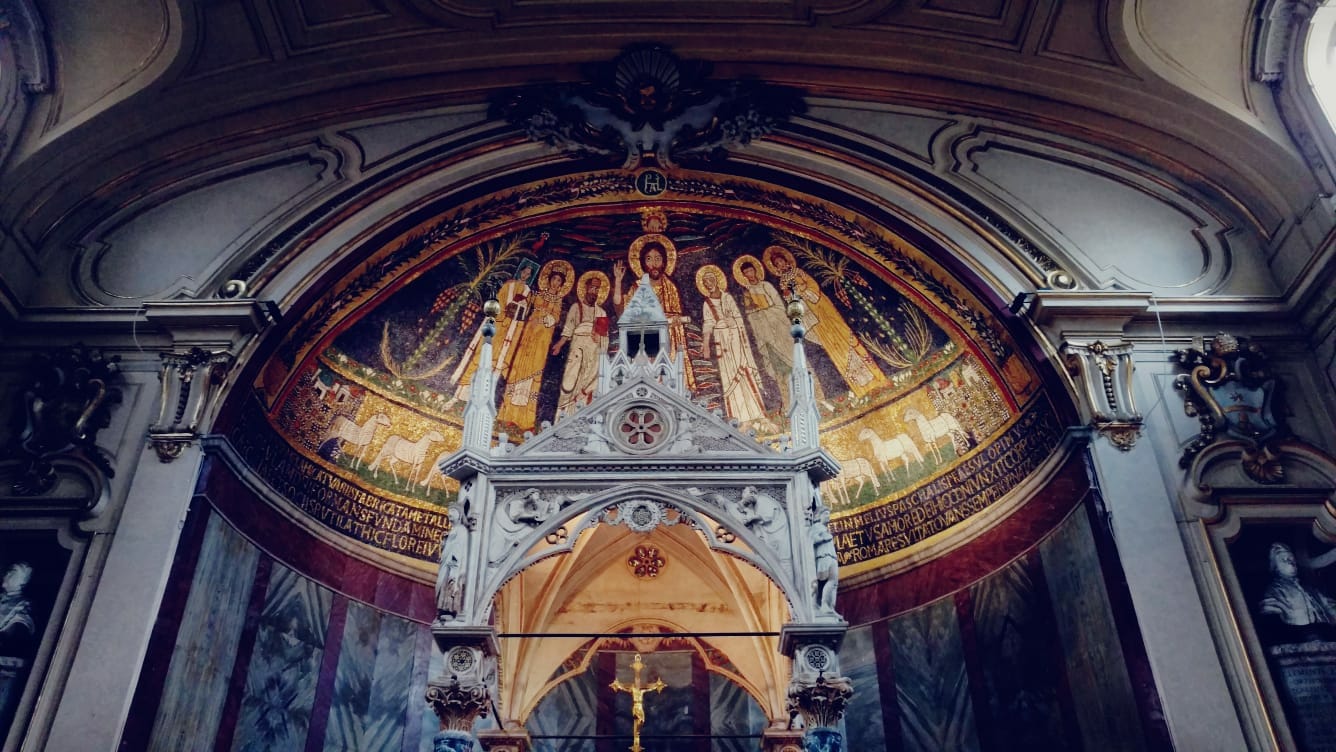
Here is a closer look at the mosaic and the altar. The church was restored in 822 to its current position. Look closely underneath it. You’ll see a sculpture quite unique in style. It reminded me fondly of the Veiled Christ in Museo Capella Sansevero in Naples. I saw a miniature version of my favourite sculpture from the Capella in the Royal Palace in Madrid during a temporary exhibition. Well worth a visit to all three linked cities and monuments.
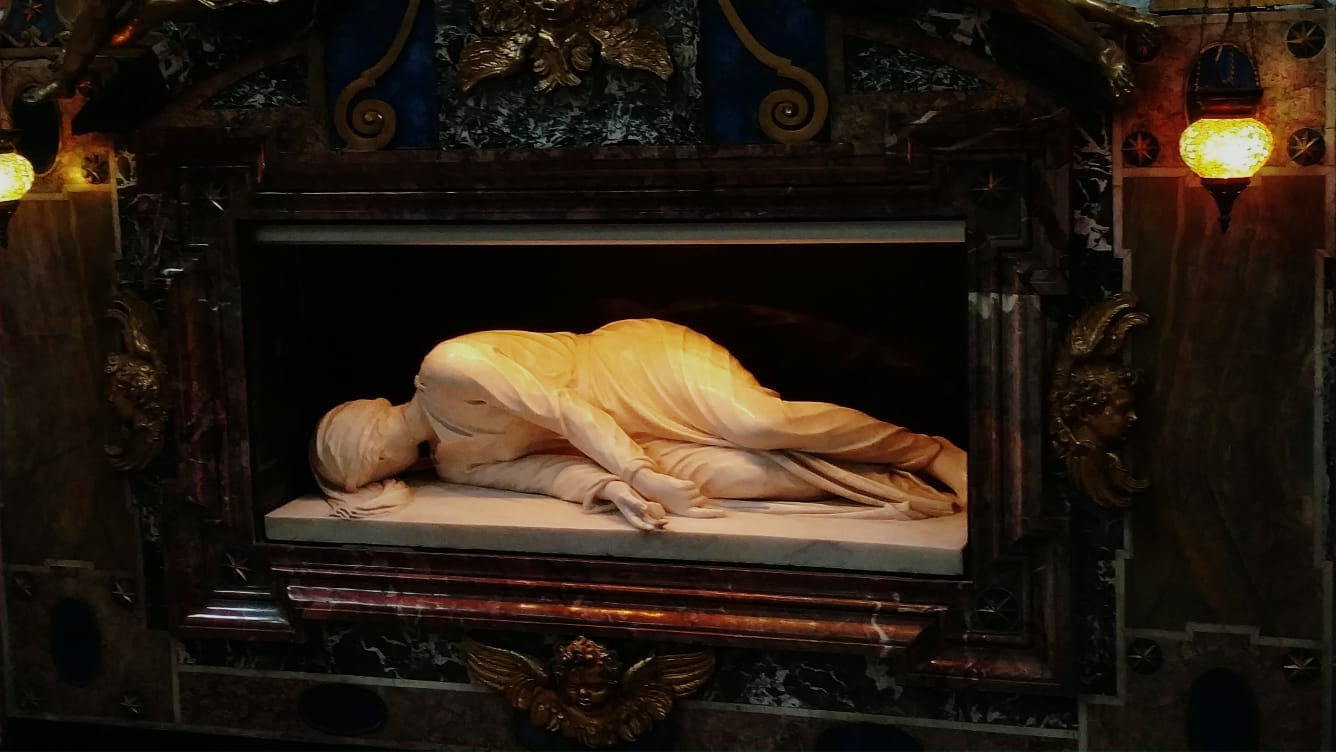
After you have enjoyed a thorough walk through the church, take a look downstairs. It costs some two euros but it is worth it. St. Cecilia is buried there. Pope Paschal I spared no expense.
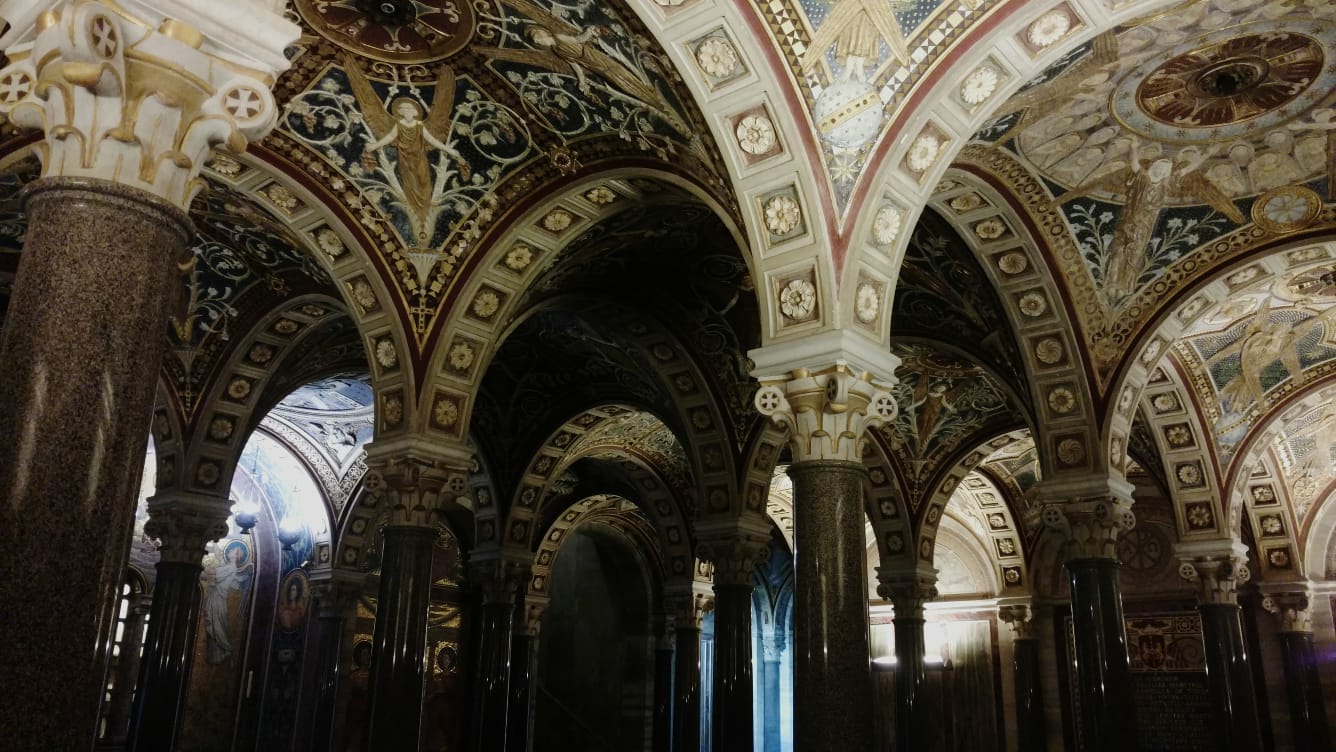
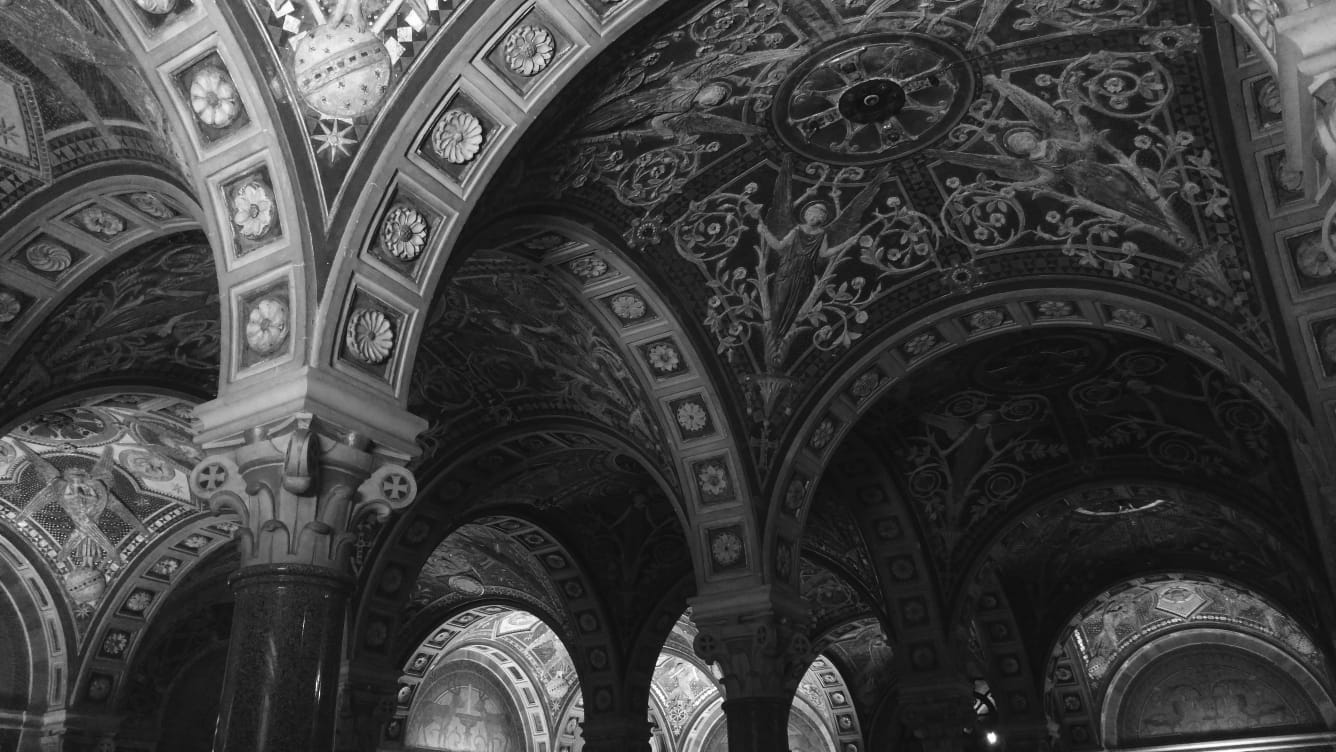
The magnificent tomb of St Cecilia is ominous to behold. Buried there are the remains of several other saints. Take some time to walk around the foundations of this church to end in the crescendo that is the tomb.
Above the church are some ancient Calvani frescoes. I suggest you go early in the morning to see them before they close around midday.
While you’re there, why not walk a few steps further and eat a meal in Supplí? You won’t be disappointed!
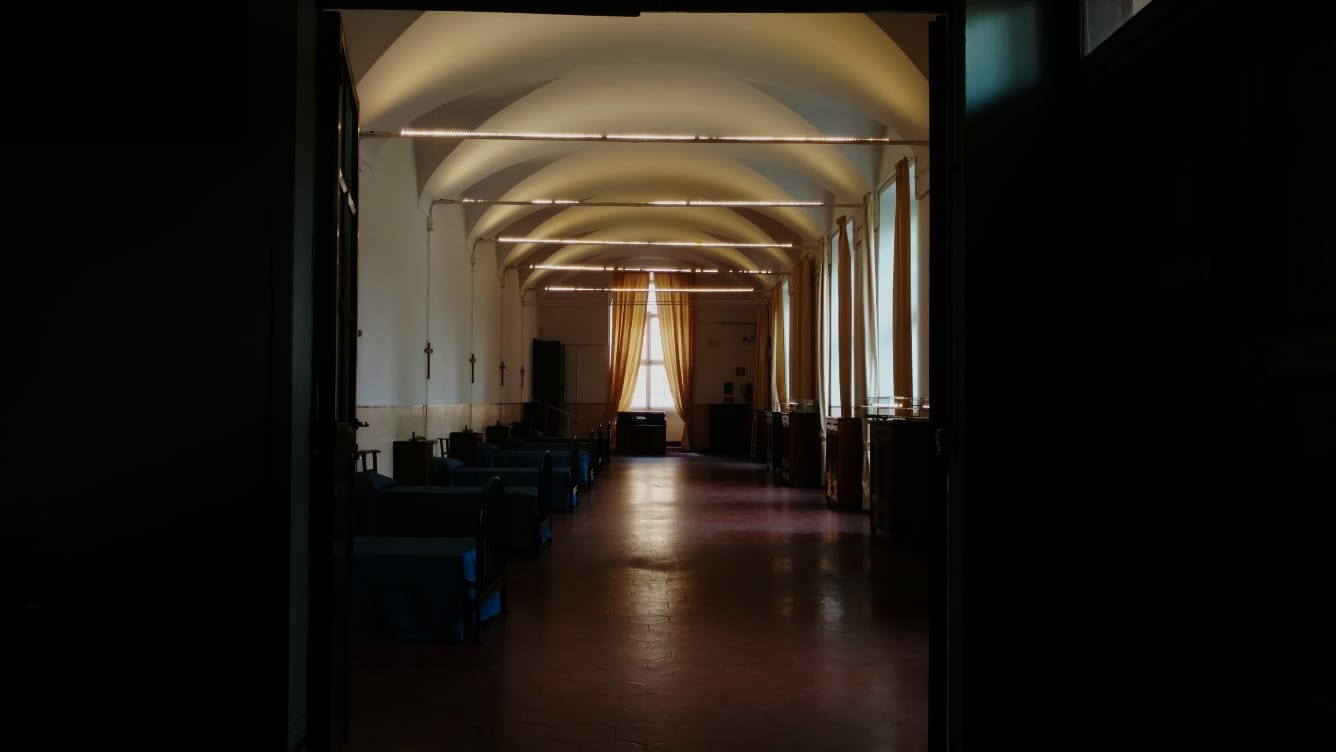
by Cedric | Jul 28, 2018 | General, Miscellaneous
After a fairly successful morning, I wandered the searing streets of Rome. I’d had a delightful meeting with my dear friend Ginebri at Roma Tre. He recommended that I visit the church of S. Cecilia. So off I went. I waited three years for the 23 bus to alight. Then my trotters took me to Trastervere. On my way to this marvellous area of Rome, I tried to stop at Santa Cecilia. Of course Google maps is not accustomed to small narrow streets and slightly unusual addresses. Hence I ended up in Ospedale S. Francesca Romana.
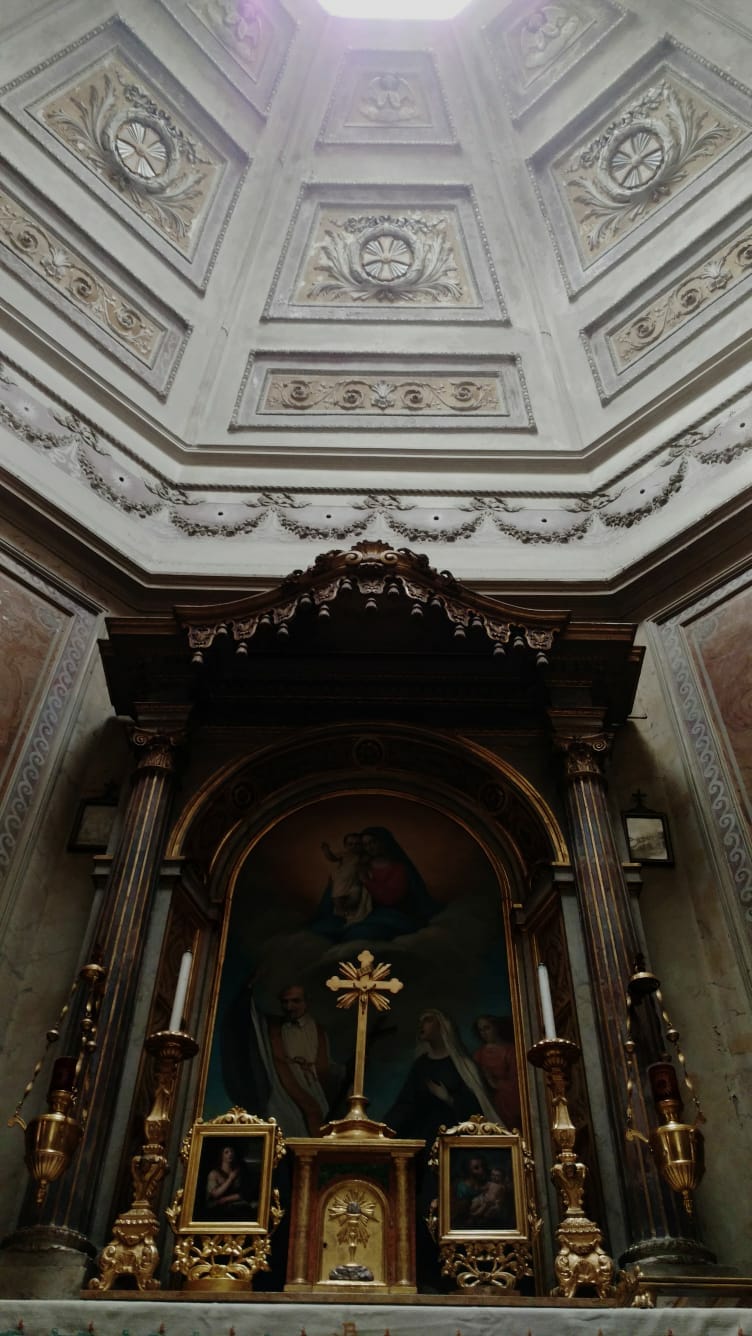
Along the garden and up the stairs, you’ll enter the chapel. Take note of the ornate tiles and charming marble altar. Further in you’ll come to a room filled with beds. This is the most accurate representaion of how the hospital functioned in times gone by.

Take note of the dusty tomes behind glass enclosures flanking each side of this hall. They contain fascinating information about the day to day running of this establishment.
Upstairs is a gallery full of information about the history of the museum. This is replete with sordid tales of papal preference and government intervention. I won’t recount the whole story for you here, it remains for you to find out about this wonderful place by yourselves on your next visit to Rome.
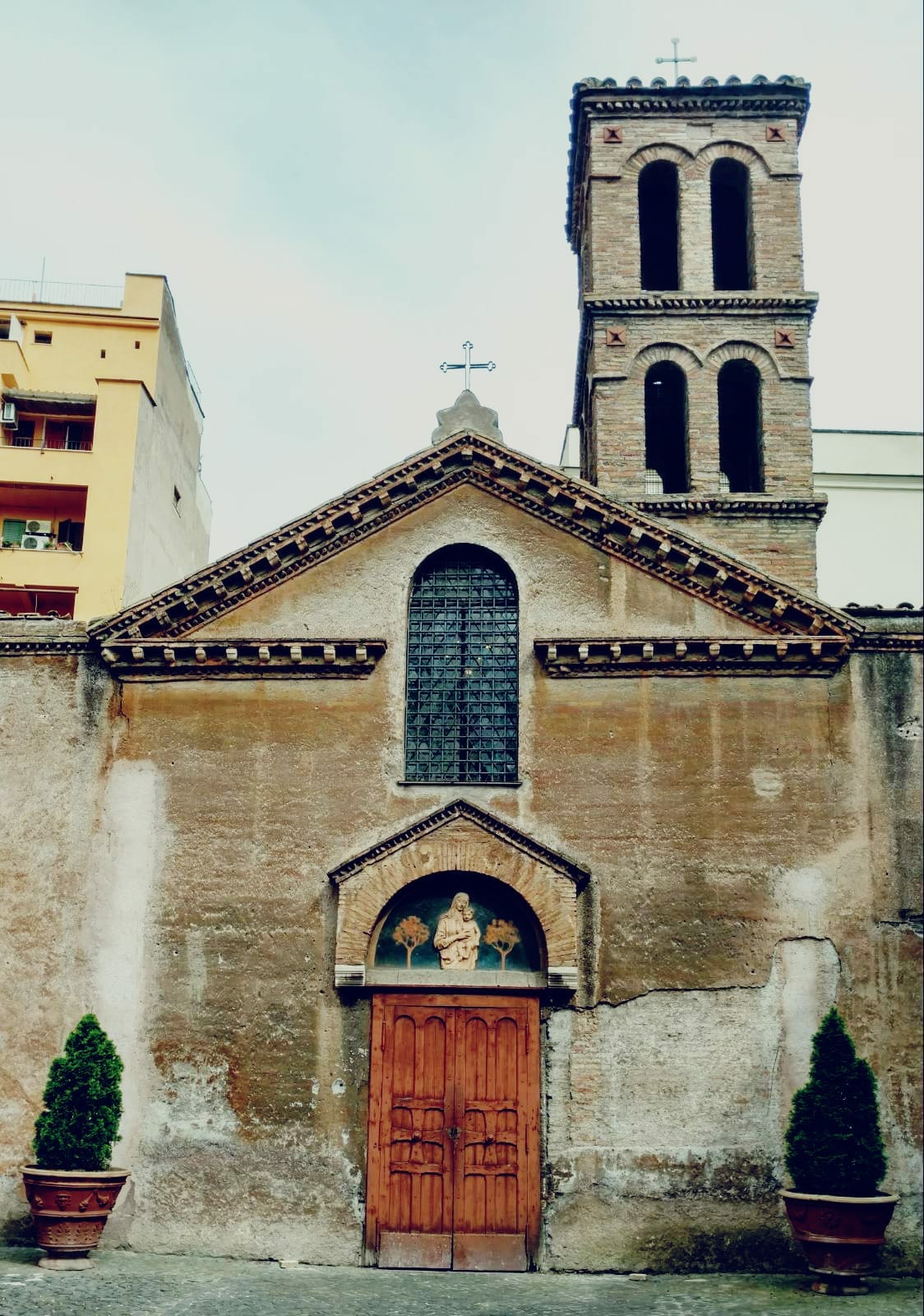
Perhaps my favourite part of this hidden museum is the 12th century church, which closes one’s visit. Look inside carefully and take note of the various artefacts denoting scenes of great importance to the life of this church. My personal favourite is found beneath the archway of the original entrance. A glorious ancient painted cross adorns the wall.
I hope you enjoy the benign majesty of this museum as much as I have.
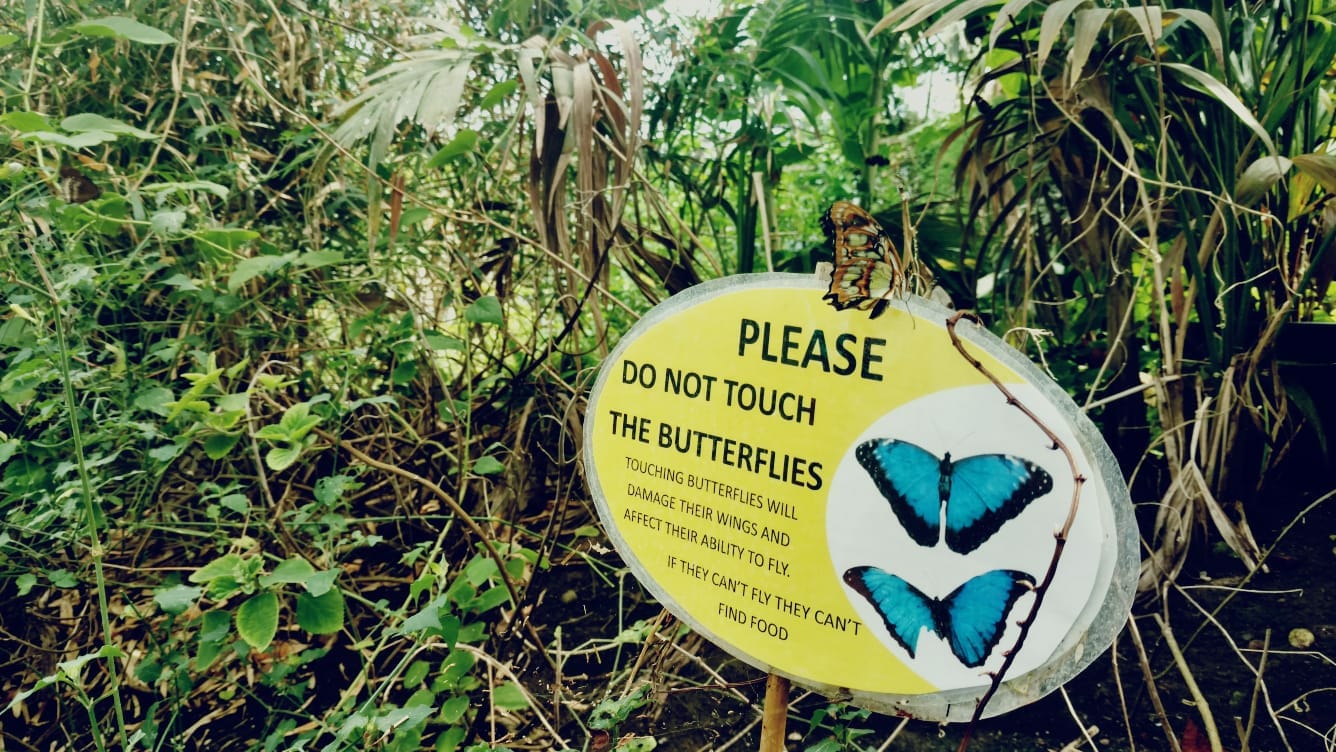
by Cedric | Jun 8, 2018 | General, Miscellaneous
Did you get the pun in the title? I hope it didn’t fly over your head.
I suppose a part of me always knew of the existence of Stratford Butterfly Farm. Why it took me four years to go here, I’ll never know. But now I am imbued with a delicate desire to return. Be wary of torrential toddlers. Although they are not half as revolting as their putrid parents; they’ll certainly make themselves heard.
Before I begin lauding this magnificent destination, those of you who can read will notice five choice words in the featured image of this post.
“Do not touch the butterflies”
It does not matter if they are on the floor, they have wings. These creatures are delicate. One slip up could cause scales to fall off of their wings sentencing them to a slow, agonising death. Now a quote from Python to illustrate my point:
“[during labour] Doctor, what do I do?”
“Nothing dear, you’re not qualified!”
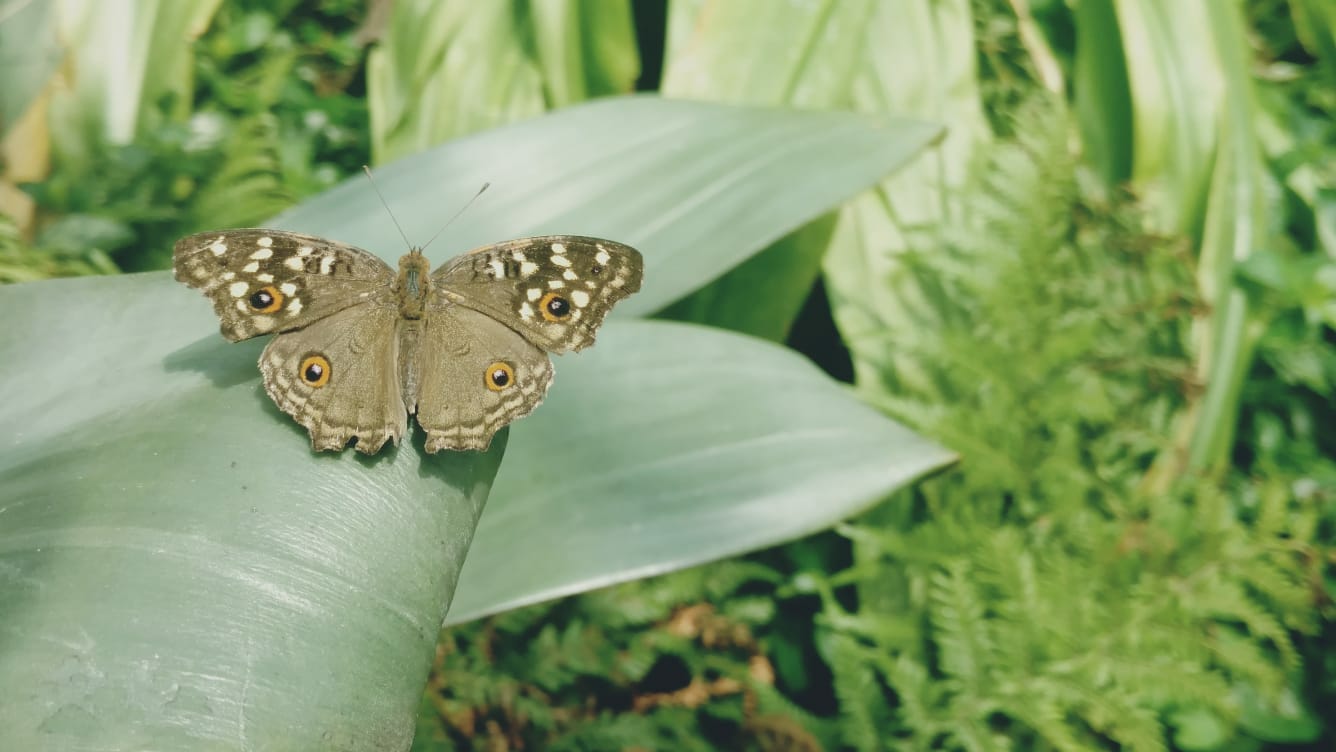
Let me give you an overview of the SBF experience. Firstly you walk into a tropical wonderland and ponder why on Earth they haven’t turned the air conditioning on. Then you are assailed by over 3000 butterflies. Following this, you look around you and see various Neolithic ignorami trying their hardest to “rescue” flying creatures which have hitherto managed quite all right without their help.
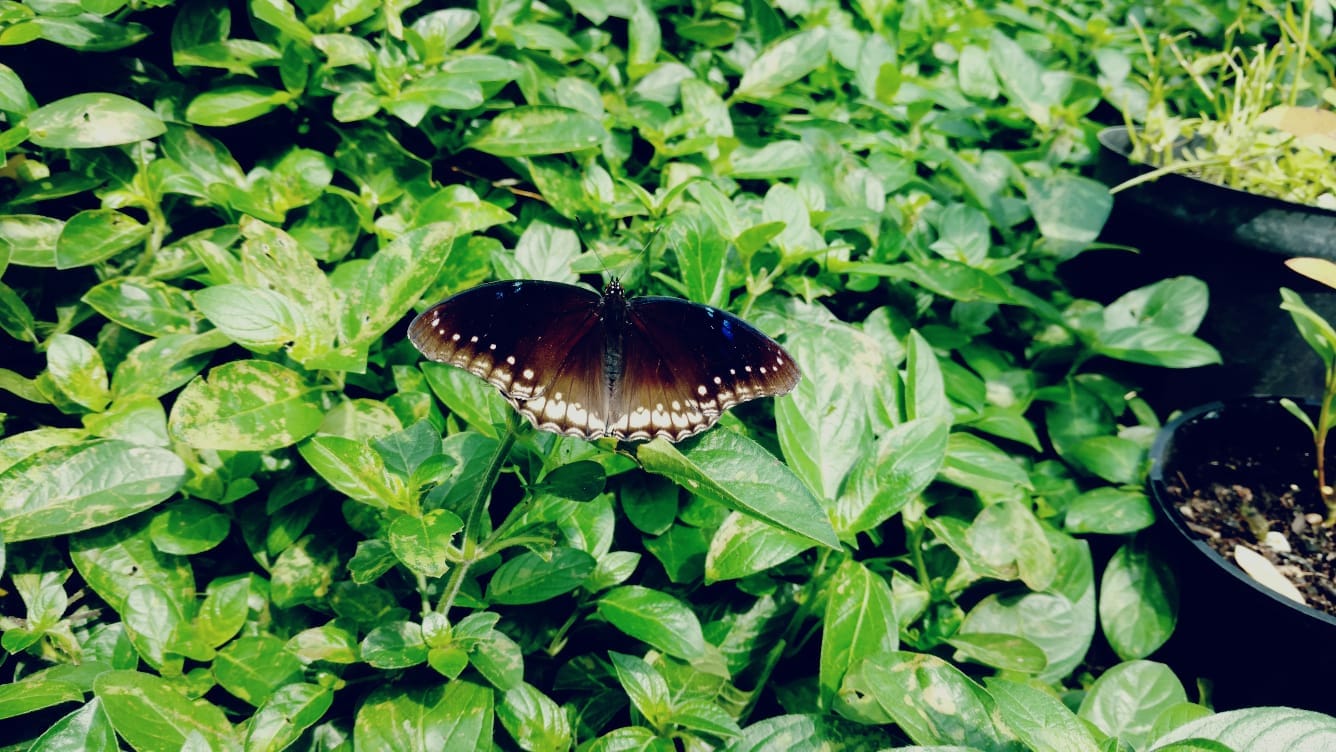
In all seriousness, however, this is a place of magic and wonderment. All around you are examples of some of the most beautiful creatures on the planet. Splendidly flying through the air above your head, and sometimes on your head!
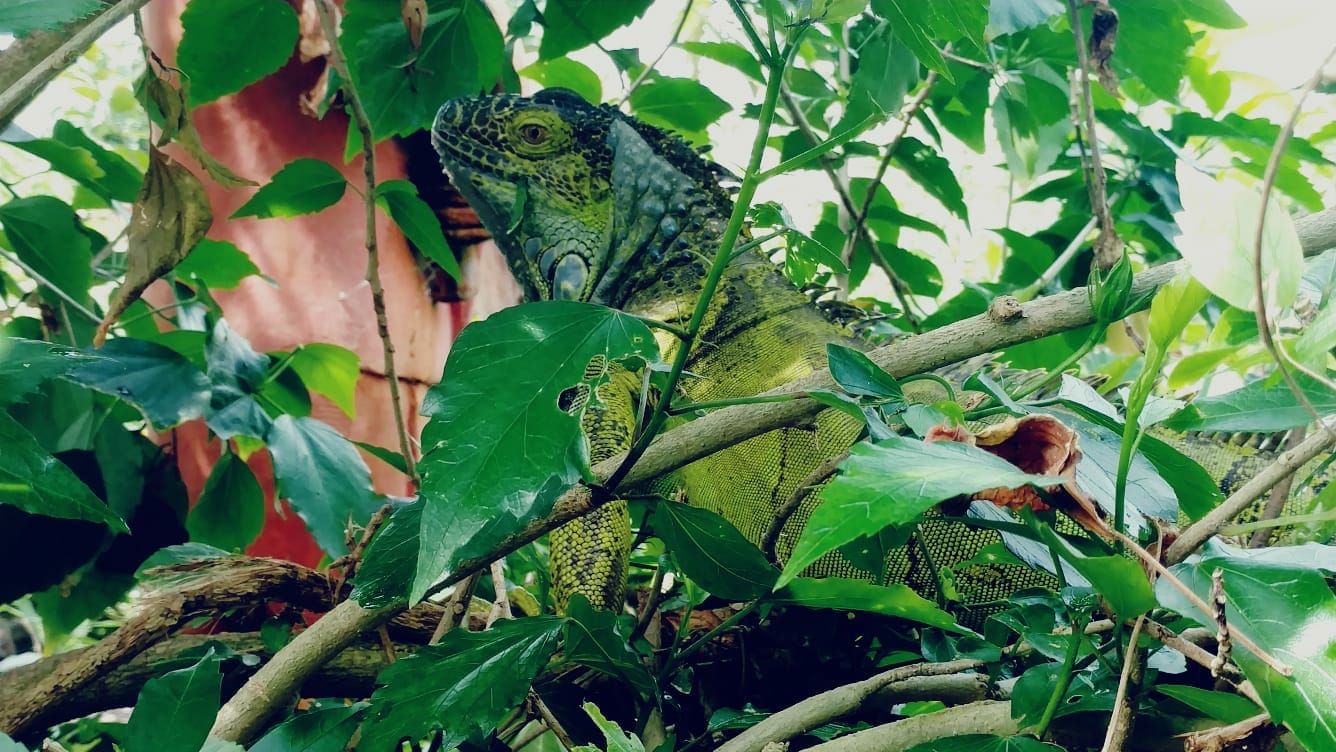
Hidden deep in the foliage are an array of iguana. I managed to find one. Perhaps you can too! I’ve named this one Albert on account of his undeniable regality.
If you go around late May/ early June; your visit will coincide with the hatching of some delightful little birds. Watch carefully and you’ll see them scurrying around underfoot. I’ve included a picture with some perspective behind it so you can see just how tiny they are!
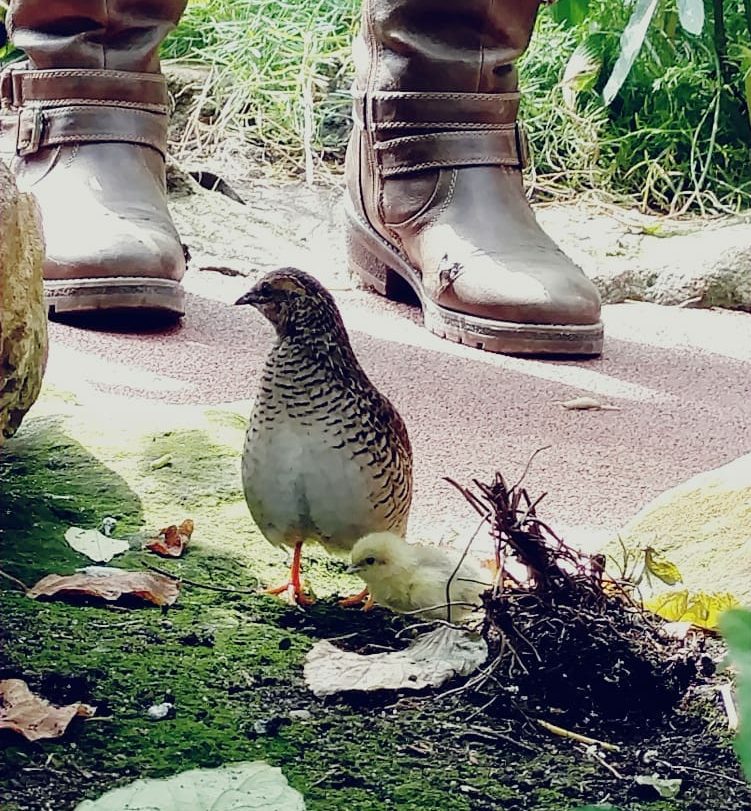
But that isn’t all. In addition to our flying friends; hidden gems and chicks with sticks; I was delighted to find a cocoon room. This was where the conservationsist aims of Stratford Butterfly Farm emerged, if you will. I was lucky enough to happen upon one almost fully out of its cocoon, in the final stages of metamorphosis. Its wings were drying, the sight was magnificent. Notice how the tips this moth’s wings resemble snakes to frighten their main predators, birds.
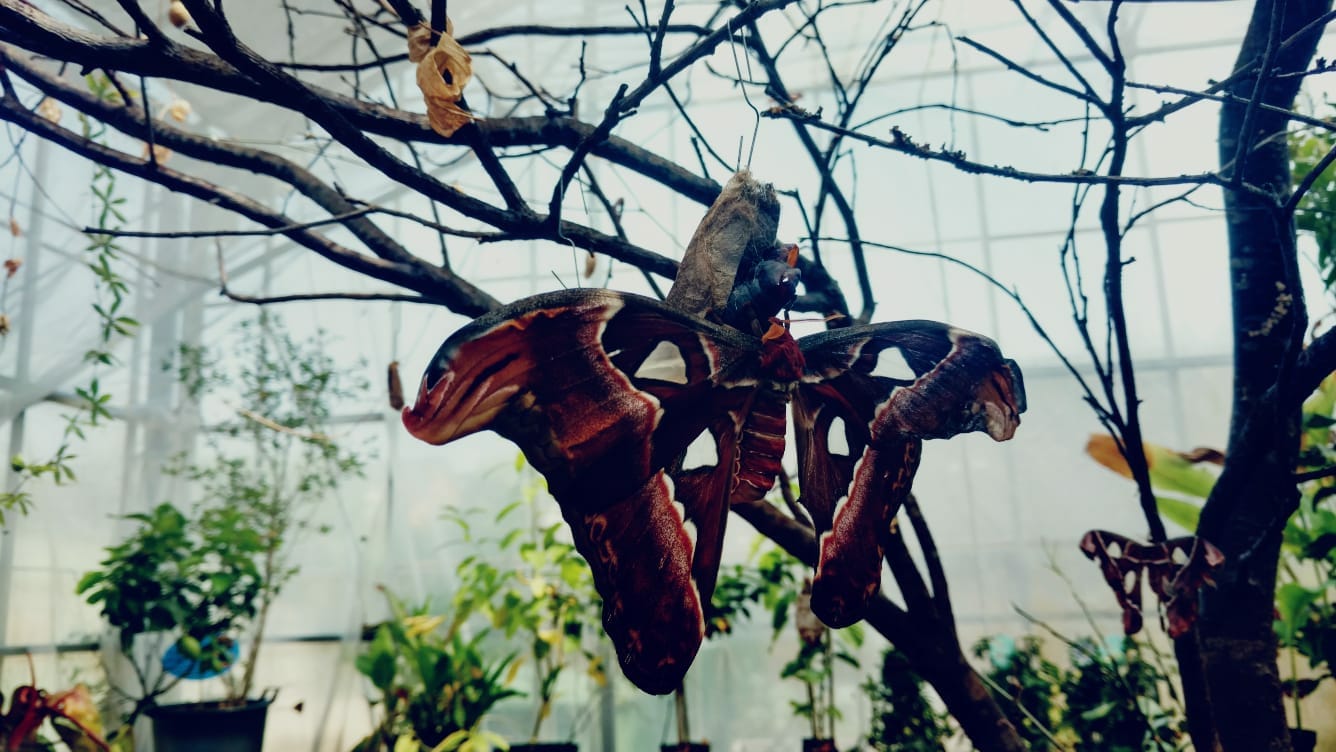
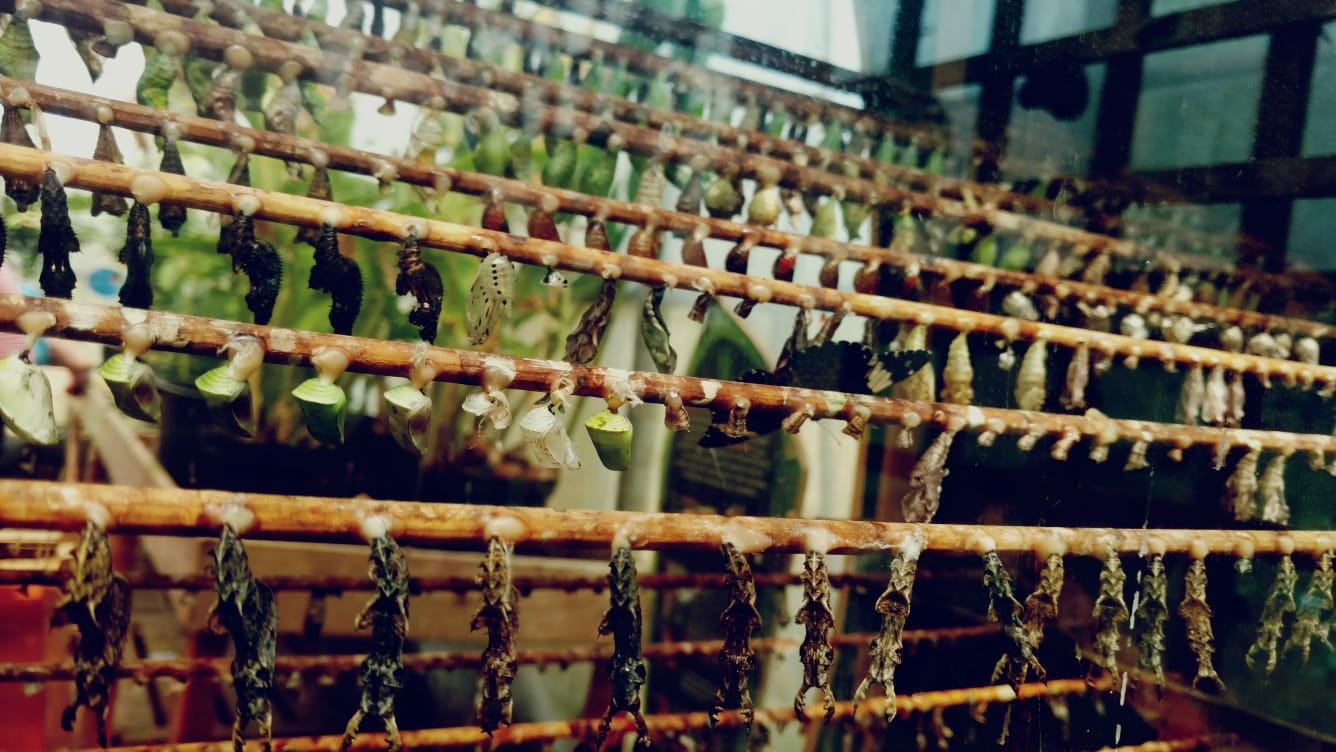
Pictured above are some of the metamorphosing cocoons on display. You can match each cocoon with it’s butterfly using the handy chart on both sides of this exhibit.
The miniature beasts room follows. Thousands upon thousands of ants walk (do ants walk?) across ropes suspended above your head. They carry leaves to their nests from one end of the room to the other. There, they will let them rot until fungus develops. Then the ants will feed from this fungus. The Farm likens this to us eating mushrooms, to make the process seem less revolting. Yet, the spectacle is at once repulsive and extraordinary. This is not a room for the faint of heart. The rooms directly adjacent to it showcase an array of tropical insects and a alarming arachnid.
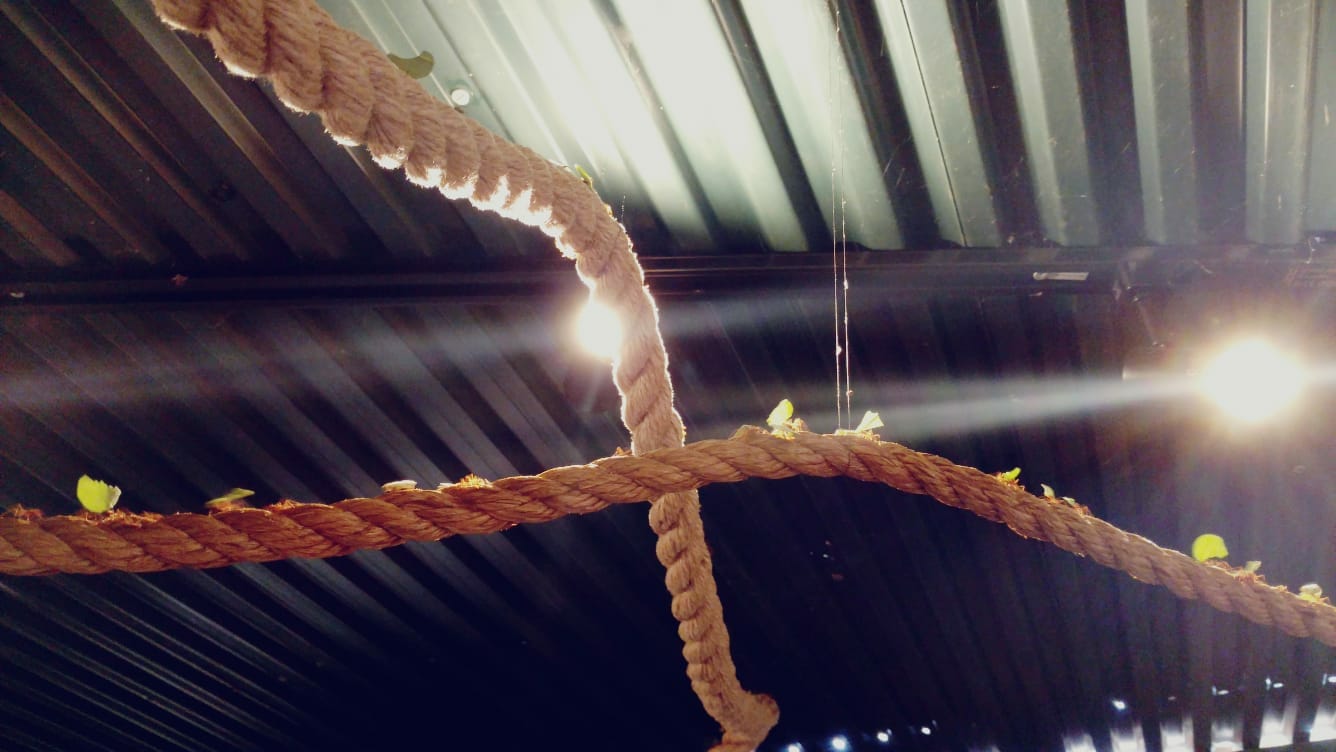
And now, a few pictures which I must share with you, including a gorgeous Gordon Setter I spotted during a stroll through Stratford.
I hope you enjoy this gem, I certainly did and shall be returning post haste!

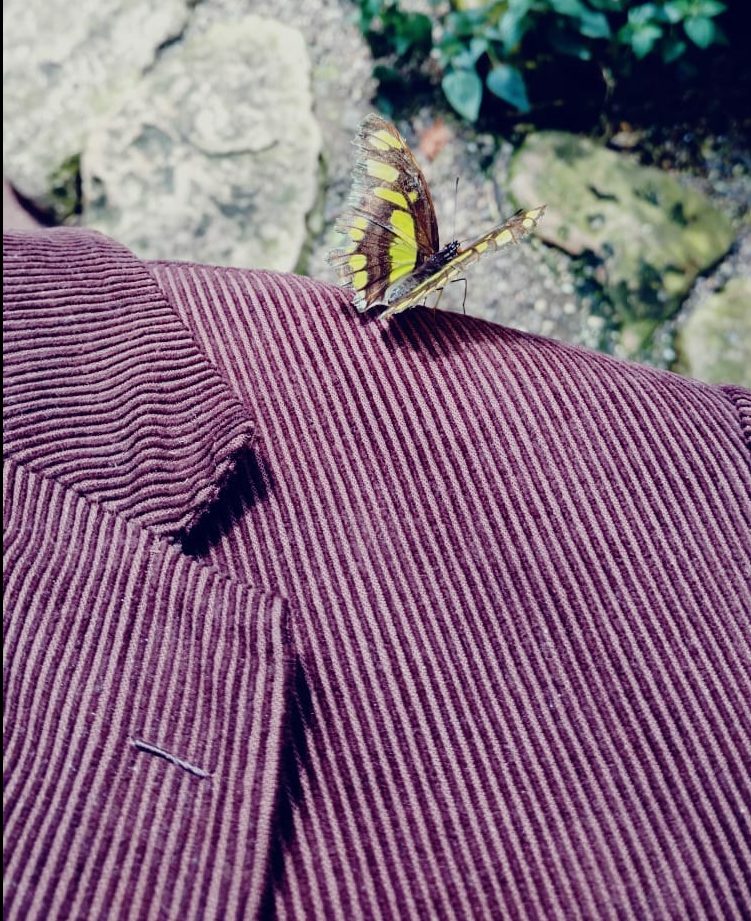



by Cedric | May 15, 2018 | General, Miscellaneous
Driving through Aston in search of its famed Hall, I did not expect to be greeted with such a sight. Standing proudly atop the town’s tallest hill, Aston Hall boasts a long and fraught history. I was about to discover the whole sordid tale.
Through the ominous double doors, I was greeted by Steve. Steve kindly gave me an hour and a half of his time explaining every facet of this opulent household. For the sake of brevity, I shall give you my personal highlights.
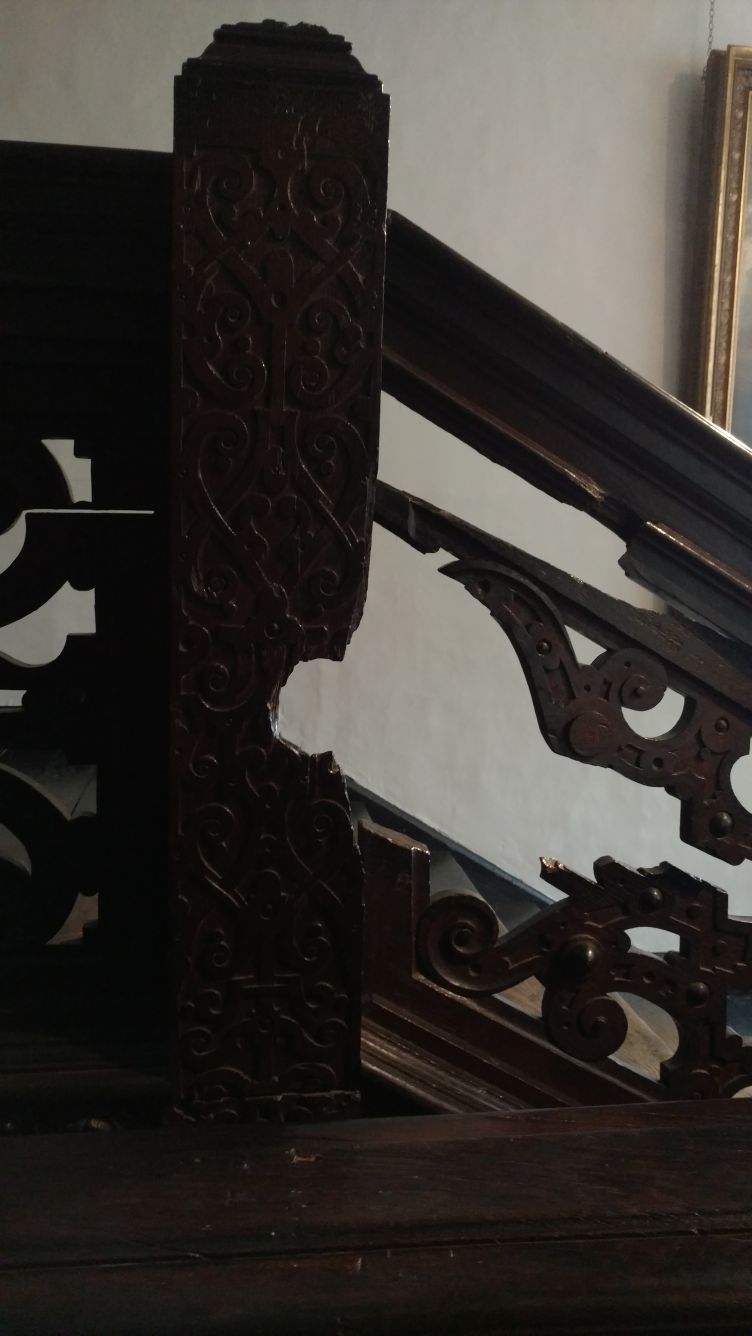
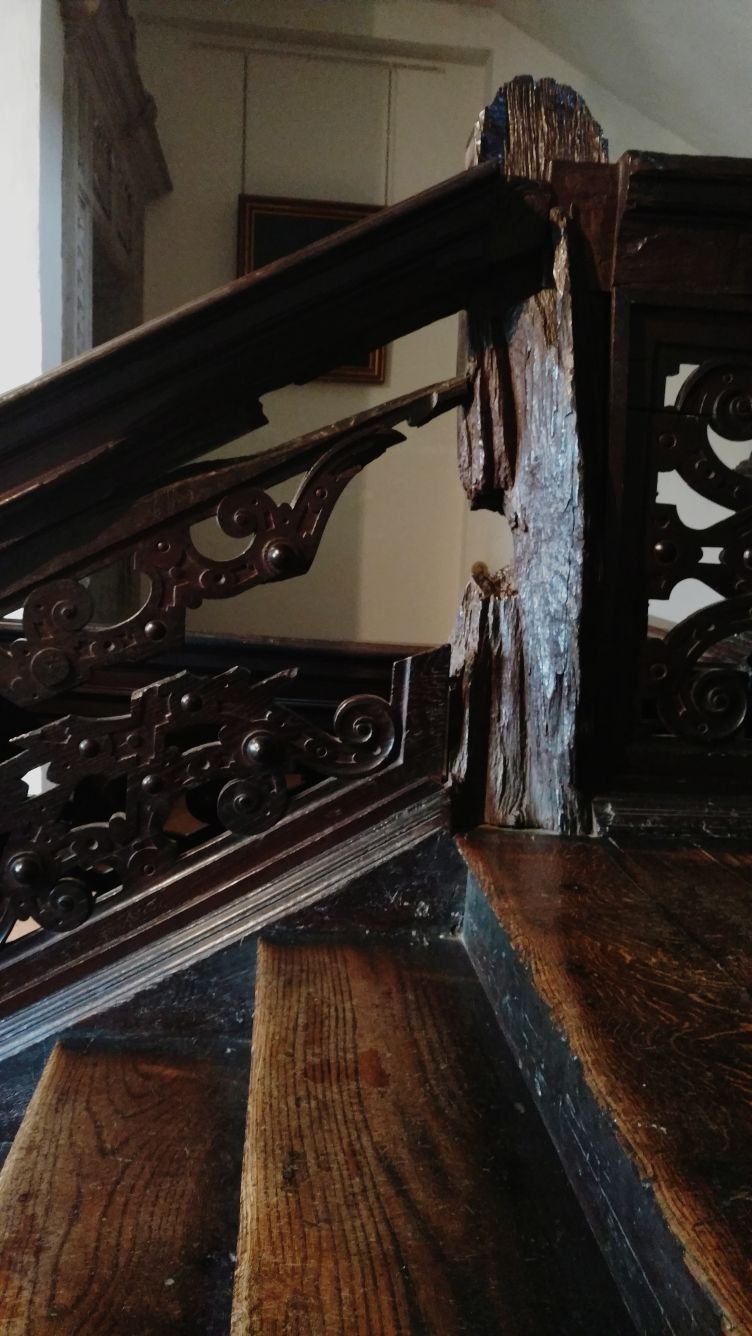
.
.
The entrance hall is magnificent, don’t get me wrong. But I must leave some aspect of mystique or you’ll never visit!
The first thing which truly stuck me, as it were, was going up the main staircase on the first leg of the tour. You see, the house was built in 1618, 400 years ago this year. John Thorpe was the architect. Charles I is said to have visited for one night in October 1642. Astute historians will know this was perilously close to the civil war of 1643. And indeed one year later in December, war broke out and this Royalist House was raided. The pictures to the left and right is evidence, left untainted of a cannonball which hurtled through the house!
Below is a more complete, pardon the pun, photograph of the grand staircase. The rooms upstairs are filled with such luxuries, it would be difficult to do them all justice.

One room downstairs is staged as it would have been 400 years ago. If you go in time you may notice some gruesome (model) rats scampering about on the table. While I am a sucker for oak tables, the things which really surprised me were two ornate oak chairs lining the wall. They are pictured below. They are almost as impressive as the oak panelling lining the dining room. Of course, as any tour guide worth his salt will tell you, the cesspit was situated near the parlour in Aston Hall’s prime, it must have been a sensational dining experience. And I mean that anything but positively.
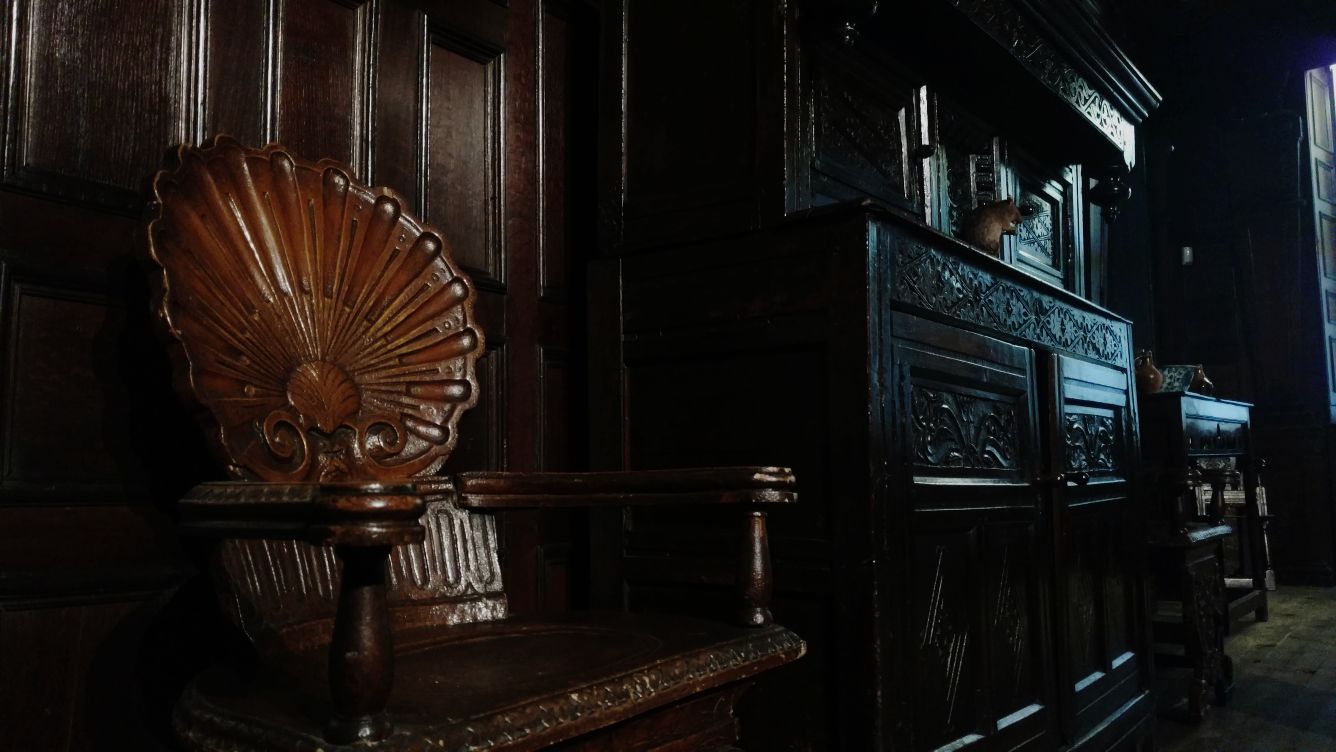
Once you’re in the Orange Room, upstairs, pay particular attention to the ceiling embellished with orange trees. Having lived in Rome for a year, I became quite fond of orange trees. The Romans even planted a garden of orange trees in the centre of Rome. Giardino degli Aranci is a famous attraction near Circo Massimo and I implore you to go to see it in the summer.
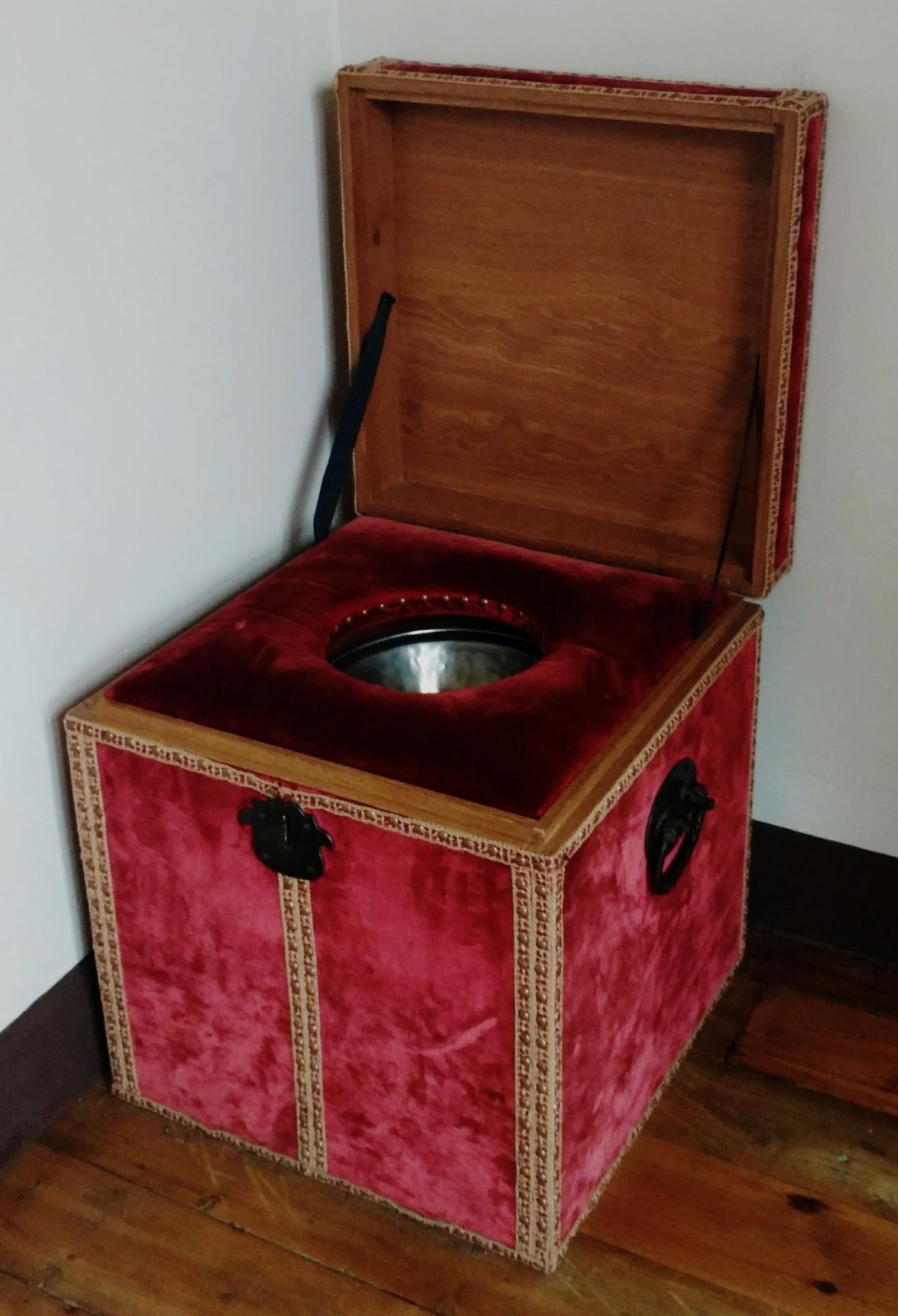
.
.
.
.
Those in the know will recognise this as a posh portable potty. Steve pointed out that the original owners of Aston Hall, the Holte family, did not much concern themselves with hygiene.
However, it does serve as a talking point and certainly is glamorous. Not half as stunning as the sights which you have yet to behold.
.
.
.
.
.
.
.
Once in the Drawing Room, pay close attention to the tapestry. In the centre you shall see an exquisite rendering of the very Hall in which you stand. Beyond the Drawing Room, and its super ceiling lays the Long Gallery. This was my favourite room in the Hall. Stunning from every regard. 136 feet long with the vestibule. Here is a photograph:
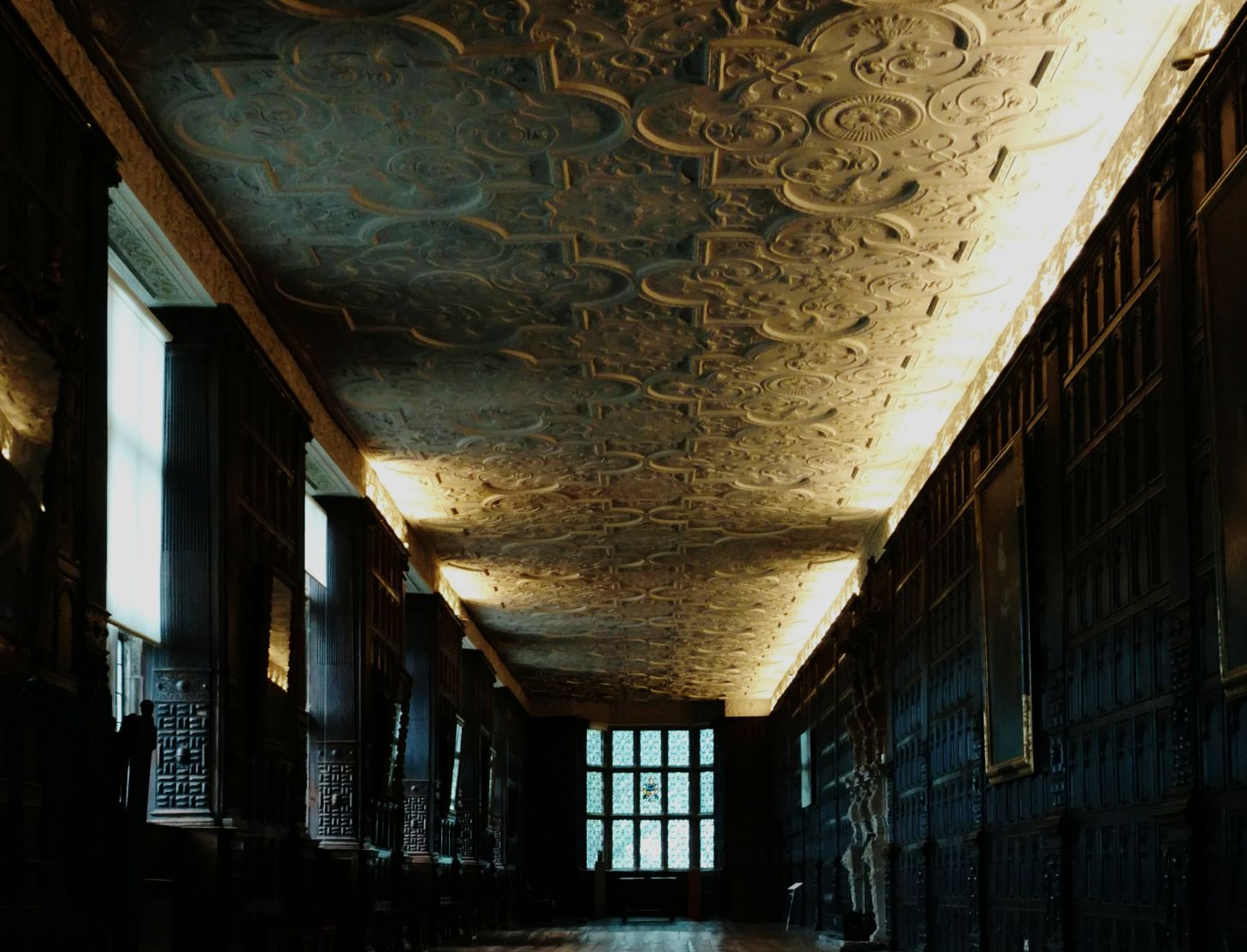
The floors are uneven so watch your step. Worry not, few highlights remain.
The loft is particularly impressive. If you can get up the stairs, which are treacherous, be prepared for a gruesome tale. Sir Thomas Holte was not a nice character. It is said he murdered one of his cooks in a rage but got away with it on account of being Lord High Sheriff of Warwickshire. I will spare you the horror, but I’m sure any member of staff will be more than happy to enlighten you.
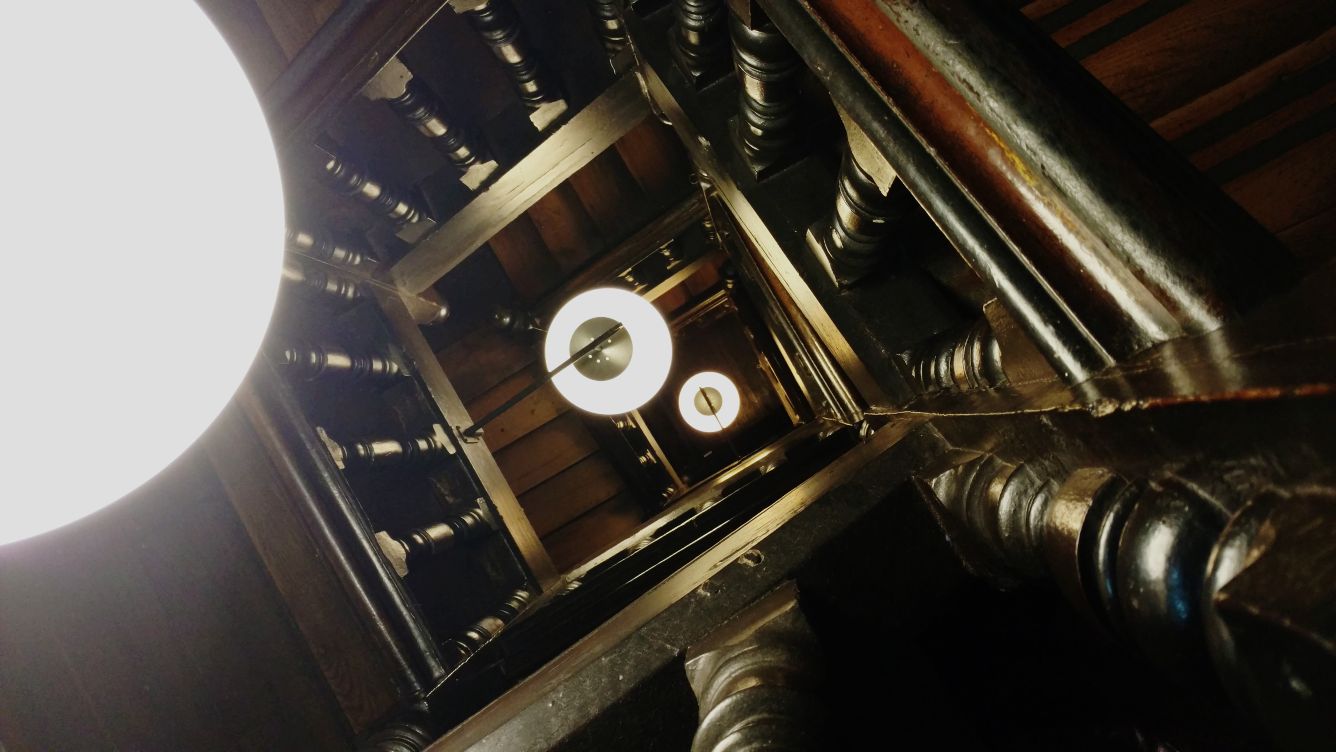
Above is pictured the view from the top of the stairs.
Now, my final highlight was not the solid whole piece oak chest in the kitchen. It was not the different bells linked to each roomabove the passageaway behind the kitchen. Nor was it in fact James Watt Jr.’s study (the final owner of the property before it was sold to auction).
It was in fact the fireplace in the Small Dining Room. I’ve pictured it below. It appears to be held up by Socrates and Plato! How Ingenious!

Overall, I was superbly impressed by Aston Hall. I’m grateful to Steve for having showed me around. And I’m grateful to Birmingham Museums for making it easy to get my ticket. You can get yours here.
Aston Hall is 100% worth the visit.

by Cedric | May 12, 2018 | Food and Drink, Miscellaneous
In the infamous words of Monty Python: “here’s a little something I tossed up for the academy.”
I wrote an essay on the legal liabilities of death or injury from torafugu (Japanese blow fish) poisoning. I’m quite proud of it so I thought I’d share it with you. Let me know what you think, if you so desire.
Discuss the legal liabilities arising from death or injury from eating Japanese blowfish.
Enjoy!




































